Search
Remove Ads
Advertisement
Summary 
Loading AI-generated summary based on World History Encyclopedia articles ...
Search Results

Definition
Pompeii
Pompeii was a large Roman town in Campania, Italy which was buried in volcanic ash following the eruption of Mt. Vesuvius in 79 CE. Excavated in the 19th-20th century, its excellent state of preservation gives an invaluable insight into Roman...

Article
A Visitor's Guide to Pompeii
Visitors to Naples and its surrounding area could be overwhelmed by the number of archaeological wonders to see. Buried for centuries beneath tons of volcanic ash and debris, the archaeological sites scattered along the coast of Naples are...
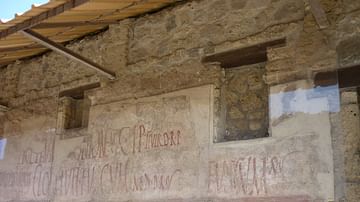
Article
Pompeii: Graffiti, Signs & Electoral Notices
WARNING: This article contains sexually explicit language that might not be appropriate for children or teenagers. The Roman town of Pompeii was preserved in metres of volcanic material following the cataclysmic eruption of Mt. Vesuvius...

Image
Pompeii and Mt. Vesuvius
The excavated ruins of Pompeii in the foregreound with the volcano Mt. Vesuvius in the background. Along with Herculaneum, its sister city, Pompeii was destroyed and completely buried during a long catastrophic eruption of the volcano...
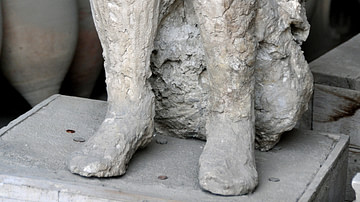
Image
Pompeii Victim, the Muleteer
A cast of the 'muleteer', a victim of the eruption of Vesuvius which completely covered Pompeii in 79 CE. The poisonous and super-heated gas cloud which struck Pompeii following the initial ash fall-out asphyxiated and baked any remaining...
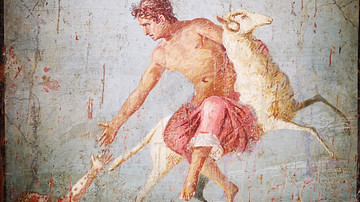
Image Gallery
20 Frescoes from Pompeii
In this gallery, we present 20 of the most striking frescoes found in the ancient Roman city of Pompeii in Italy. These frescoes were once buried under a thick carpet of volcanic ash from the Vesuvius eruption of 79 CE. Year after year, archaeologists...
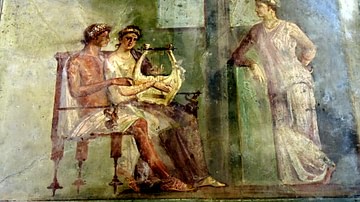
Image
Pompeii Fresco of a Woman Playing a Lyre
This panel, once identified as a music lesson, probably depicts a scene of love, set inside a house. A woman playing a kithara (a type of lyre) sits with her lover who gazes adoringly at her. From Pompeii, in modern-day Italy. Roman period...
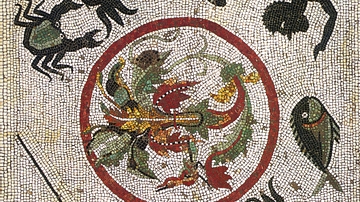
Image
Pompeii Fishing Mosaic
This mosaic is from the "House of Menander" in Pompeii and depicts two African men fishing. The work dates to the 1st Century CE and is currently in the National Archaeological Museum of Naples in Italy.
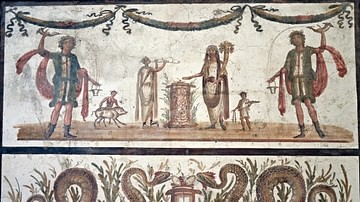
Image
Pompeii Fresco with Lares
Fresco depicting two Lares (protective deities, sons of the god Mercury) pouring wine from a drinking horn (rhyton) into a bucket (situla). They stand on either side of a scene of sacrifice. The head of the family makes offerings, a musician...
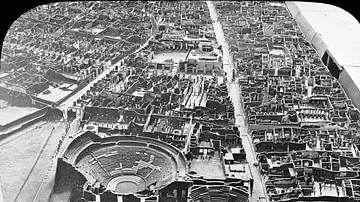
Image
Aerial View of Pompeii
A black and white photo taken c. 1900 CE of the Roman town of Pompeii, buried in volcanic ash following the eruption of Veusvius in 79 CE. In the foreground are two theatres.